Getting married is an adventure and a step into the unknown for any couple. But when I married my partner, Bob, in 2007, neither one of us knew how very true both of those things were going to be for us.
I was 20 years old and he was 23, and we had everything in front of us. As we talked about our life together, we worried about the typical things like jobs, finances, buying a house in Nashville, and future children.
I was so not expecting the years-long health mystery that was headed our way, one that would completely reroute the course of our life.
Ever since childhood, I suffered sporadic bursts of strange symptoms.
Headaches, bouts of severe fatigue, and body aches would flare up at random. And in the fourth grade, doctors diagnosed me with mononucleosis. That would be the first of many misdiagnoses I would receive over the years, including celiac disease, postural orthostatic tachycardia syndrome, chronic mono, and various neurological issues.
Still, I managed to live a happy and mostly healthy lifestyle, and finding my person and falling in love was the icing on the cake. Even though we were so young when we met, Bob and I knew we were the one for each other quickly. We belonged to the same church so we shared a lifestyle, a worldview, and similar goals. But what really grabbed my attention was how patient and kind he was with me. I was self-conscious about some of my symptoms—sometimes I would have trouble walking—and he was always supportive and loving.
My health was good during the period leading up to our wedding, and I was optimistic that whatever it was causing my strange symptoms was under control.
A few months after we married, our idyllic future was shattered when I woke up unable to see out of my left eye.
I can recall one specific night when I went to bed fine, and the next morning I woke up blind in one eye. What I remember most was the severe pain. When I tried to look out of my left eye, there was just nothing. I was terrified and we rushed to the hospital.
Ever since our wedding I’d had some bouts of spontaneous vomiting, vertigo, and headaches—but the doctors had no explanation and simply told me to rest more, so I had written those things off. But this scary new eye symptom motivated the doctors to order a comprehensive panel of tests. I was scared but also relieved that I might *finally* get an answer.
“Headaches, bouts of severe fatigue, and body aches would flare up at random.”
Over the next few months I underwent every test in the book, but doctors couldn’t figure out a definitive reason for my optic neuritis, much less my other symptoms. Optic neuritis is an inflammation of the optic nerve that can cause headaches and temporary vision loss (although mine would end up being permanent), so they looked at many inflammatory disorders before settling on multiple sclerosis (MS)—which unfortunately didn’t end up being the answer to my medical mystery.
Here we were, newly married, and I was now blind in one eye and facing the possibility of a lifetime of disability. Bob felt helpless, watching me suffer with excruciating symptoms we had no cure for. He immediately went to the worst case scenario, grieving the loss of not just our present but also the future we’d so carefully planned.
For the next several years, we rolled with the punches. We became a team and even adopted five children. But my health continued to worsen.
After months of trying to get pregnant unsuccessfully, we began to wonder if parenthood would be one more thing this confusing mystery disease stole from us. But we ended up adopting five amazing kids, which was a lot of work but also brought *so* much joy into our lives.
We learned how to share parenting responsibilities, and the kids themselves learned how to help me (and each other) when my symptoms flared up. At that time, some things were better than we’d assumed—I was still able to walk on my own at that point, for instance—yet other concerning symptoms began to pop up again and my health continued to deteriorate.
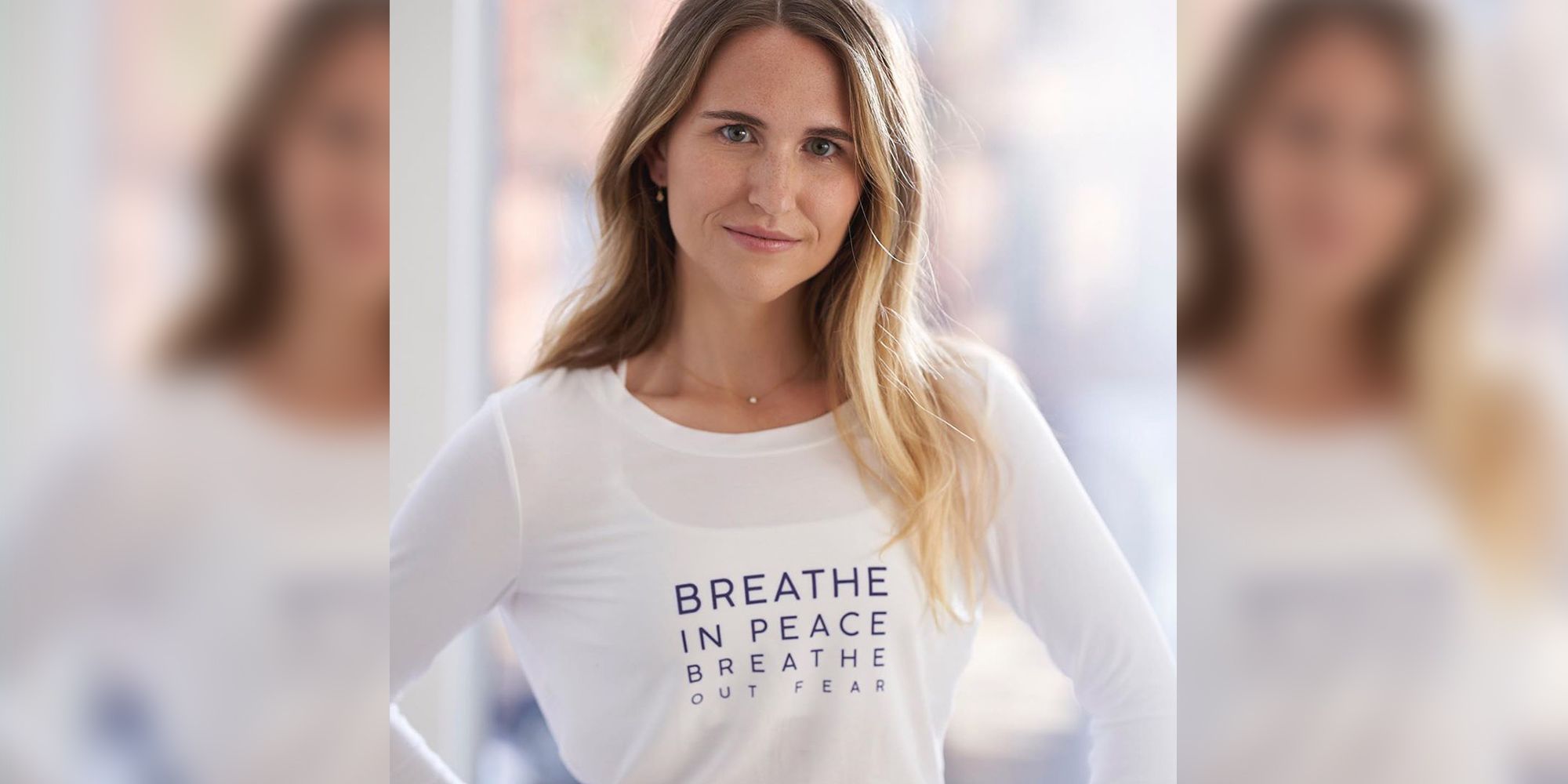
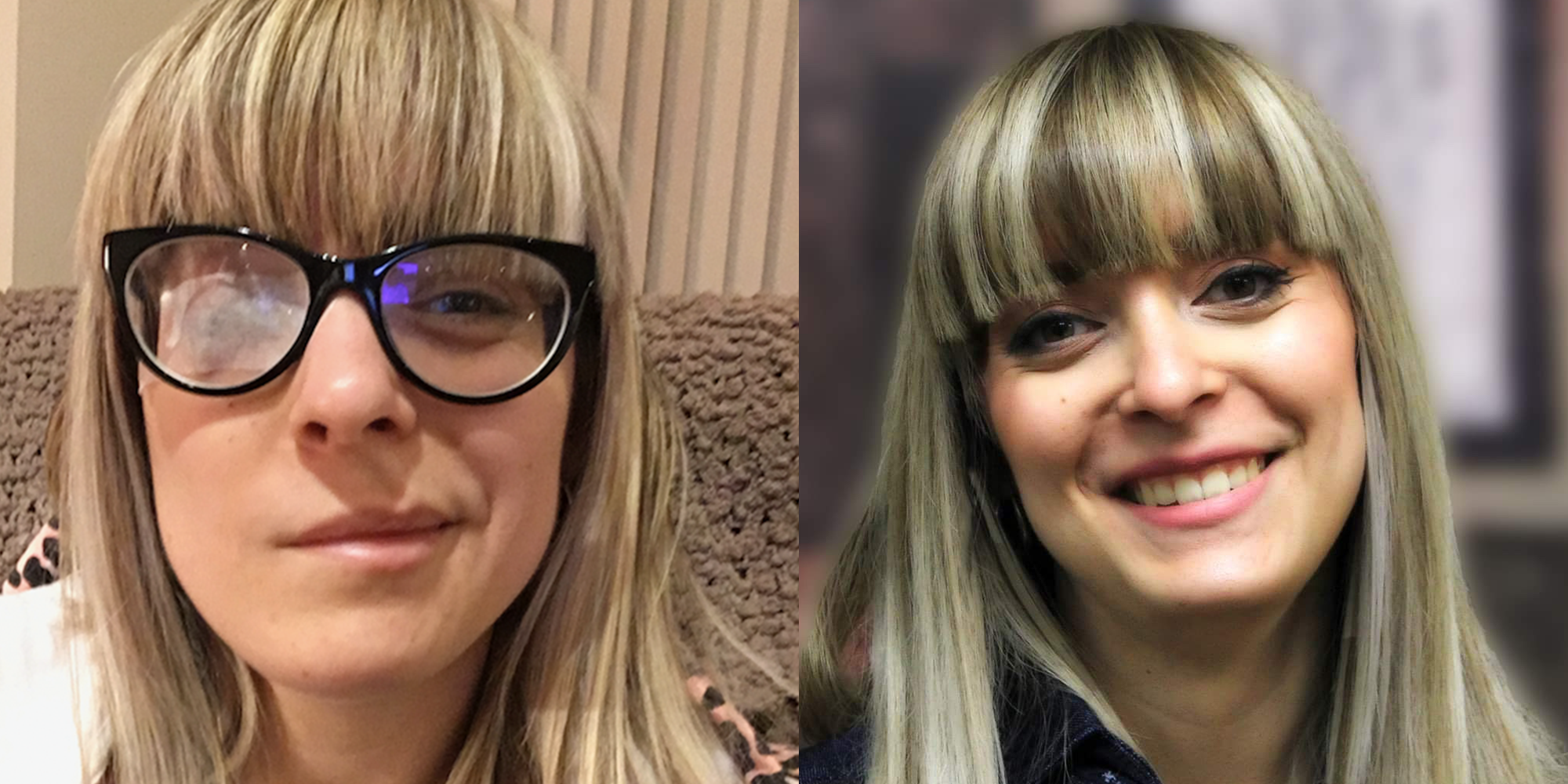
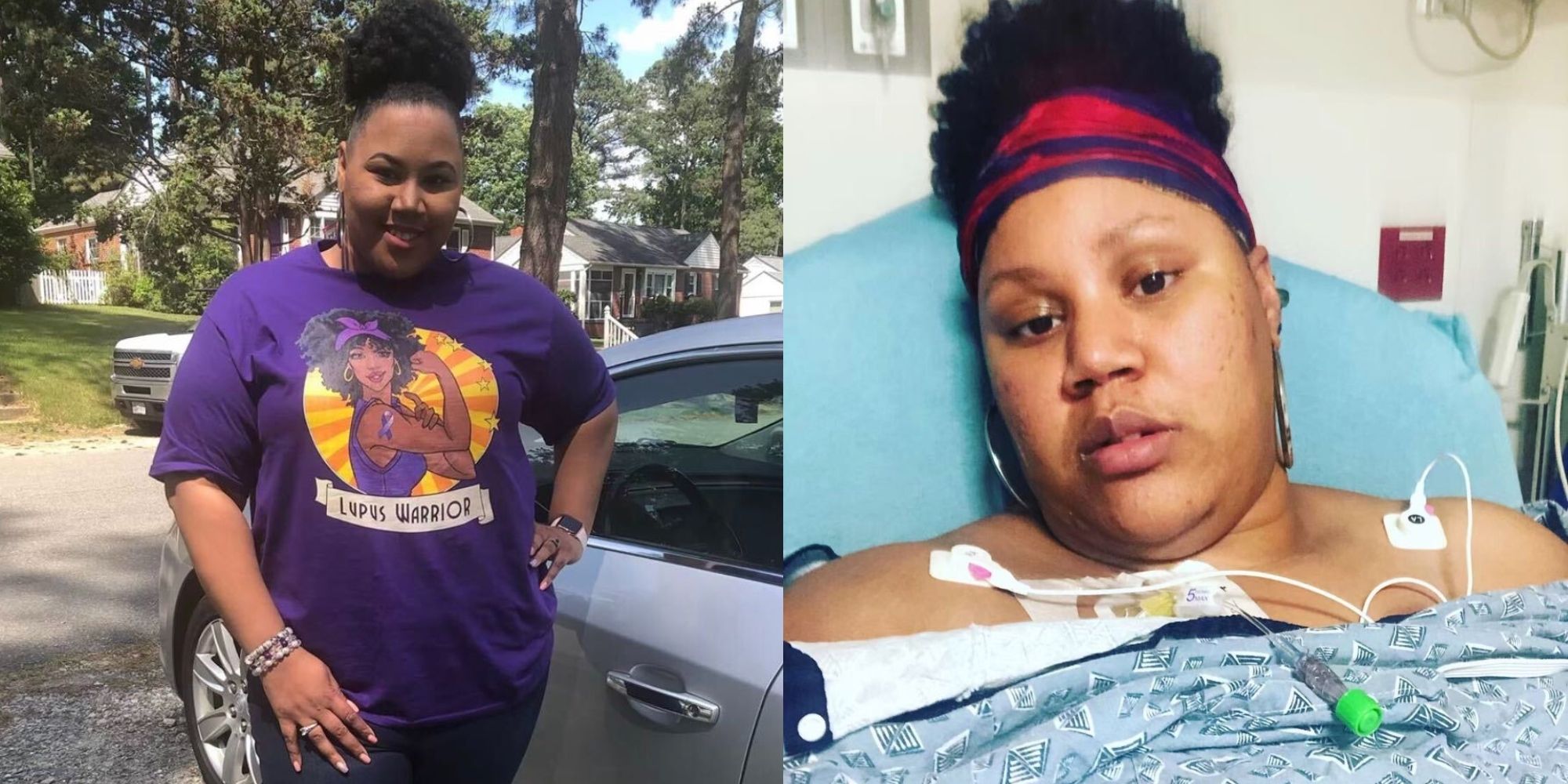
Then one morning in 2017, I woke up with severe eye pain again, except this time I was blind in both eyes. I was diagnosed with bilateral optic neuritis, and my doctors assured me this was yet another symptom of MS. They prescribed a different treatment to try, but as we drove home, all I could think was how to tell my kids I was blind. How could I be a mother of five young children, with no eye sight? It was the lowest point of my life.
I was also exhausted, frightened, and so tired of hearing how “weird” my MS was. By now, I knew in my gut it wasn’t MS.
In my quest for answers, I finally found a doctor who really listened to me and got to the bottom of my medical mystery: I had NMOSD.
He sat with me and looked through the years of charts, tests, and medications, and I was finally diagnosed with neuromyelitis optica spectrum disorder (NMOSD), a rare, lifelong, debilitating central nervous system disease where the immune system attacks the optic nerve and spinal cord, causing blindness, muscle weakness, and paralysis. The disease affects nearly 15,000 people in the U.S. and, like many autoimmune disorders, the exact cause is unknown.
“I’ve lived my worst-case scenario and made it through.”
Even though it was technically bad news, I was surprisingly so happy, because it was the first time I had a diagnosis that explained everything.
The hardship didn’t stop there, though. I woke up one morning in November 2019 and couldn’t walk. It was official; the worst had happened. I couldn’t drive. I couldn’t cook. How was I supposed to take care of myself, much less my kids, the youngest of whom was just two?
But I found inner strength and new ways to cope.
We made adjustments to our house to make it easier to navigate. I learned to rely more on my husband and our loved ones to take over the things I couldn’t manage, like driving. I taught the kids—now 13, 10, 10, 7, and 3—how to help me and they became my eyes and legs for basic chores, like cooking and laundry.
At first I really worried about the toll this would take on them. They had all already experienced such difficulty in their young lives, surely they deserved to not have to worry now. But it actually turned into such a blessing.
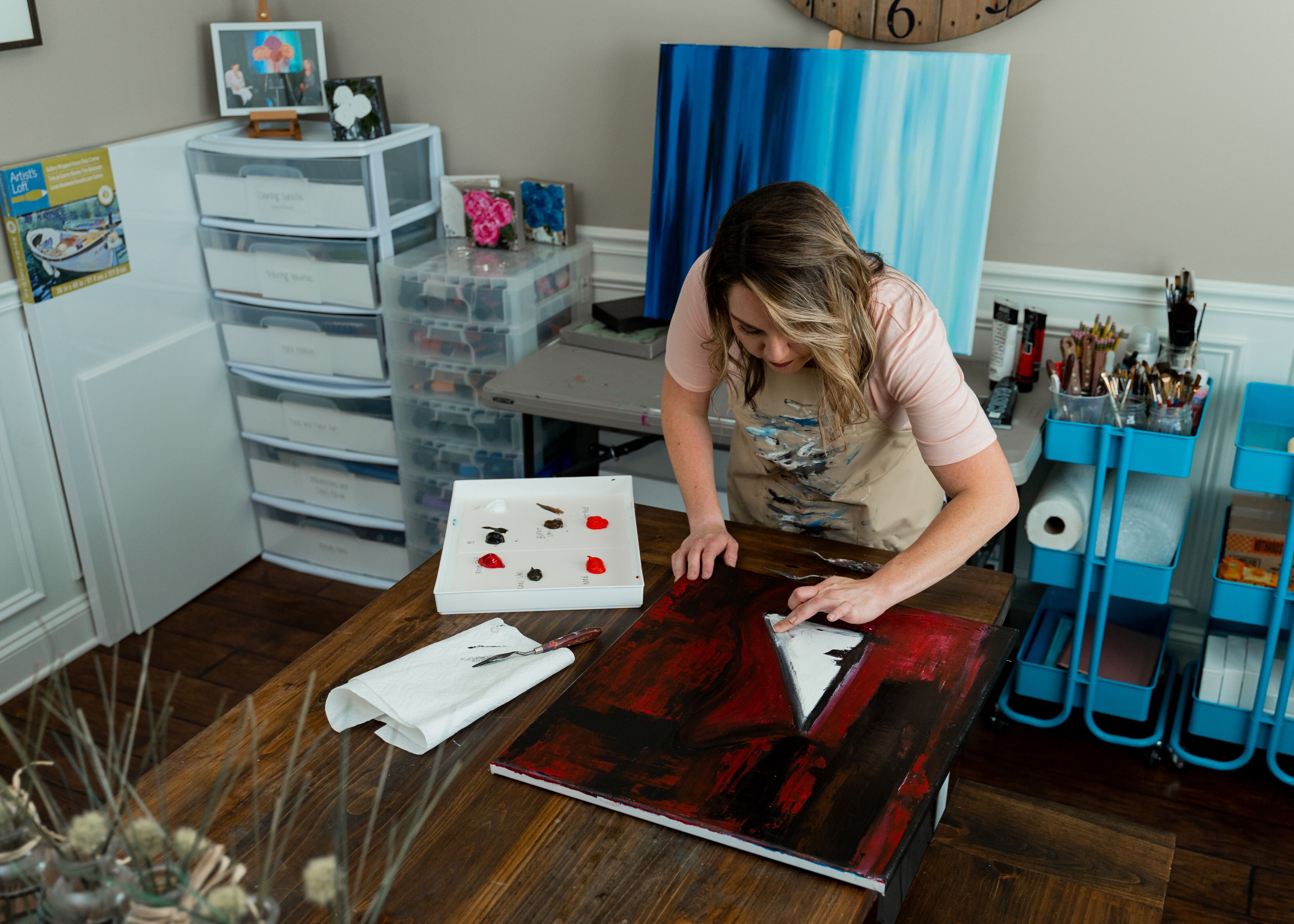 Chelsey Tucker
Chelsey Tucker
Figuring out how to talk about my illness with them, in a way they could understand, was tricky, especially since on the outside I didn’t look any different. But once they got it they were excited to help me and we got to spend more time than ever together, just talking, playing games and working.
My one heartbreak, however, was that I could no longer see my children’s beautiful faces. Yet even that has turned into a bonding moment, as Bob and the kids take turns describing to me in detail how they look, as I feel their faces. It was that kind of experience, using my others senses to “see,” that brought me to painting.
Painting might seem like an odd choice for someone who is blind, but it’s been incredibly freeing. Instead of trying to copy the world the way others see it, I paint my world, the way I see it, allowing others to “see” things through my eyes. It’s become a family affair with the kids telling me what they see as well. My art became my passion, my way of communicating, an outlet for my emotions, a type of therapy, and then my career.

My outlook on my life has changed completely. I’ve lived my worst-case scenario and made it through.
Now I can see how much beauty has come from this. For instance, at first all I could think about were the things I could no longer do for my children but now I am amazed at the long list of things they have learned from this experience—they are compassionate, independent, and hard working in a way their friends can’t be. They know they are deeply loved and are learning how to thrive even in terribly hard situations.
This has also improved my relationship with Bob and as we’ve had to learn to communicate better we’ve become a pretty fantastic team, working together to run our household.
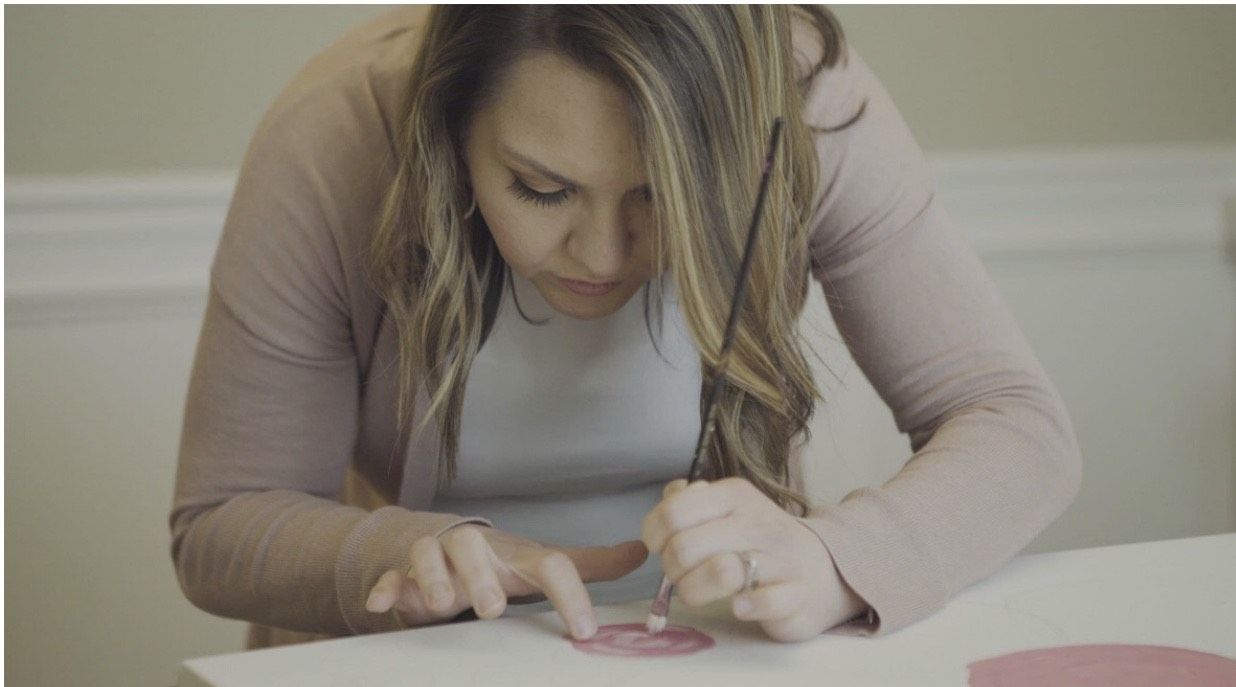 Chelsey Tucker
Chelsey Tucker
But perhaps the biggest change has been in me. I have faith in our future again. I have hope; there’s no point in obsessing about the future because all that leads to is anxiety. (A lesson that’s been even more important during the novel coronavirus pandemic!)
When it comes to our future there’s a lot I don’t know. But here’s what I do know: Every problem can be figured out but you can’t skip the hard parts because those are the things that make you grow.
To learn more of Chelsey’s story and to see her artwork, follow her on Instagram @chelseytuckerart. For more information on NMOSD, head to this resource page.
Source: Read Full Article
